Shotguns are extremely popular and affordable hunting weapons. Like any other weapon, they have evolved, but evolution has always been slight.
So it’s no wonder the shotgun sports more misconceptions than the rifle or handgun — such as the preposterous idea that shotguns can’t use an optic.
Straight up, a shotgun can greatly benefit from the presence of an optic.
Hunting and tactical applications both require the use of a great optic, and shotguns are prevalent in both worlds. Like most things, the red dot or scope you choose depends on the task you are tackling.
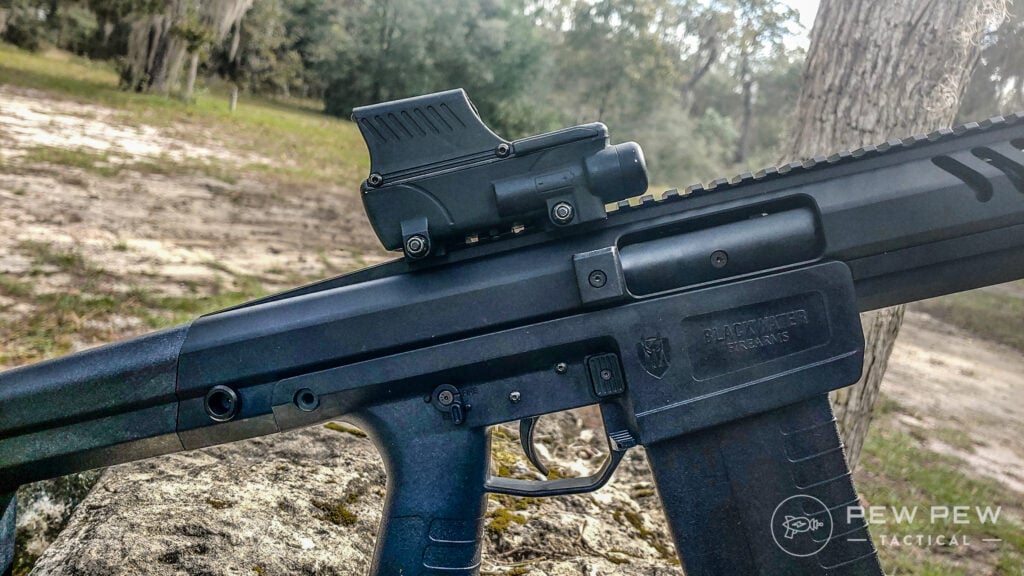
So, today, it’s all about shotguns and optics.
We’re going to take a look at how shotgun optics work, why you want one, and which is the best optic to have.
Table of Contents
Loading…
THE QUICK LIST
-
Best Battery Life
-
Editor’s Pick Red Dot
-
Best Budget Pick
Best Shotgun Red Dots
1. Holosun 507C V2 – Best Battery Life
Prices accurate at time of writing
Prices accurate at time of writing
-
25% off all OAKLEY products - OAKLEY25
Copied! Visit Merchant
Pros
- Amazing reticles
- 50K battery life
- Good value
Cons
- Auto setting will not adjust to compensate for weapon-mounted lights
If I had to pick one optic for my defensive shotgun, it would be the Holosun 507C — preferably the V2 model with big buttons.
Admittedly many will see this as a controversial choice in the world of MRDS optics. To be fair, Holosun is making waves with its optics.
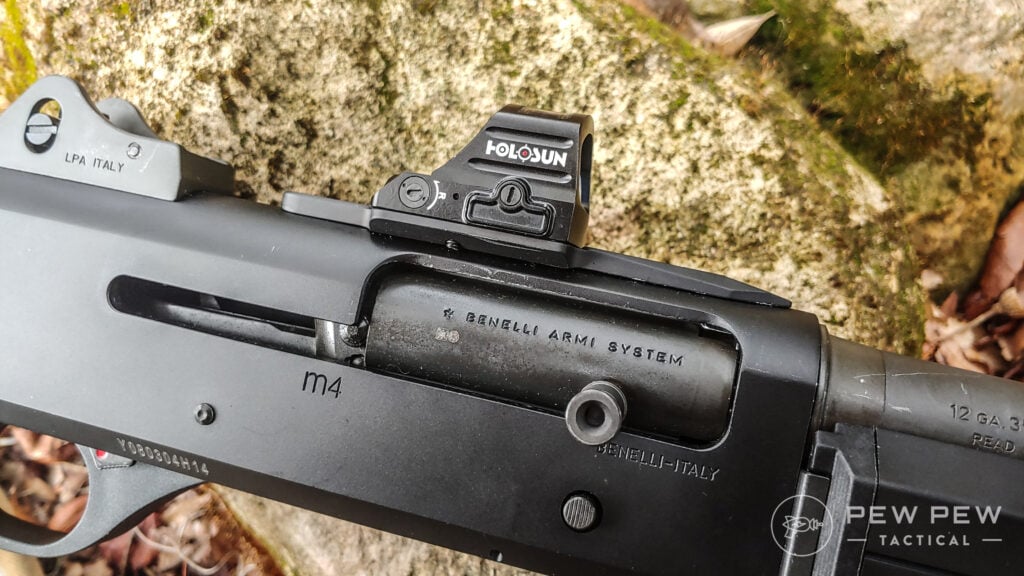
The 507C uses the same pattern as the Trijicon RMR for mounting and includes a Picatinny mount adapter.
It’s a very robust and tough optic that meets and exceeds the needs of most looking for a home-defense optic. But what really makes this model shine is the reticle selection.
You have three reticle options: a simple red dot, a 32 MOA circle, and a 32 MOA circle with a dot.
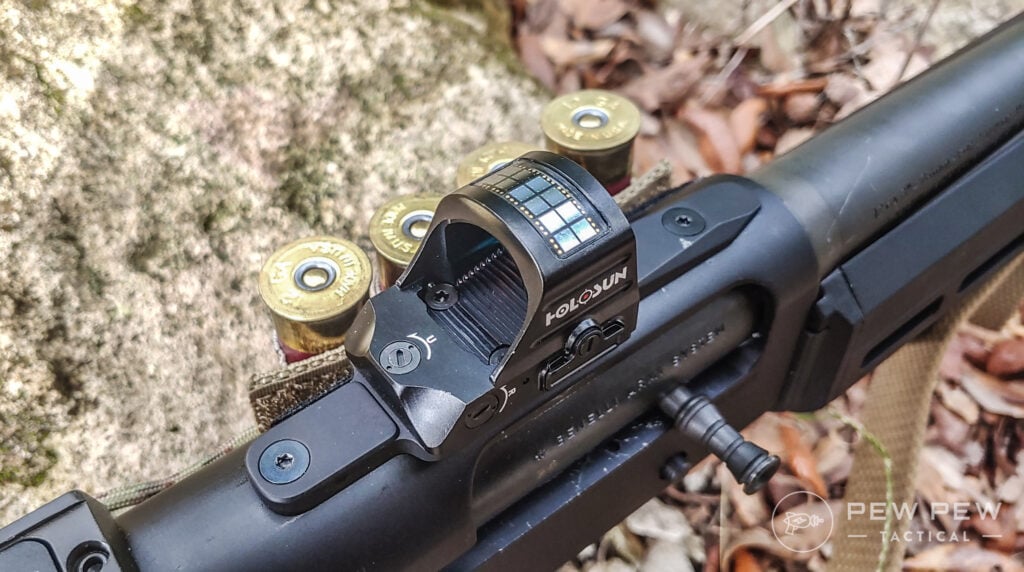
The 32 MOA circle is an awesome choice for shotguns. I use it on my Benelli and pattern my load inside of it. I know that at 15 yards, every pellet will be inside that circle with my chosen gun and load.
Why is this important?
Pellet accountability and precision inside the home range, which gives me a greater degree of confidence.
2. Trijicon RMR – Editor’s Pick Red Dot
Prices accurate at time of writing
Prices accurate at time of writing
-
25% off all OAKLEY products - OAKLEY25
Copied! Visit Merchant
Pros
- Solar dual-fuel option available
- Plenty of reticle options
- Rugged and strong
Cons
- Bottom loading battery
The Trijicon RMR set the standard for durability, design, and power.
It’s the most widely accepted and adopted mini red dot for pistols and rifles. Let’s not forget the United States Marine Corps even pairs them with machine guns.
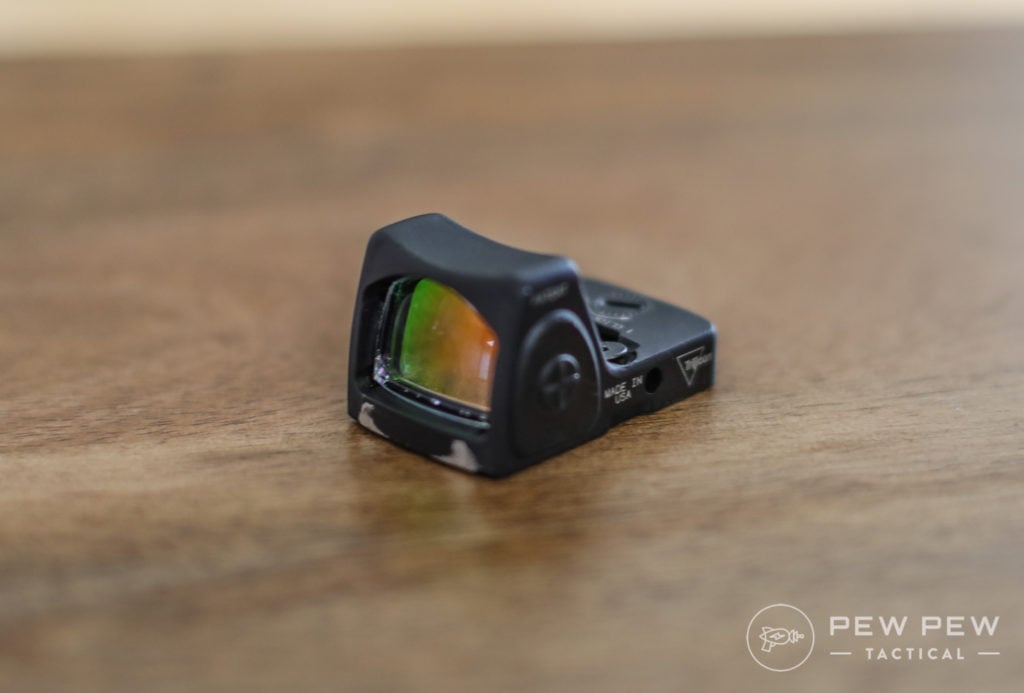
You can find the RMR in a variety of designs and even different reticle sizes.
The 7 MOA amber model would be an excellent and eye-catching shotgun option. Hint: A bigger reticle is easier to see, which lends itself to speed.
That being said, the 3.25 MOA model, 6 MOA model, or even the 9 MOA model would also work well.
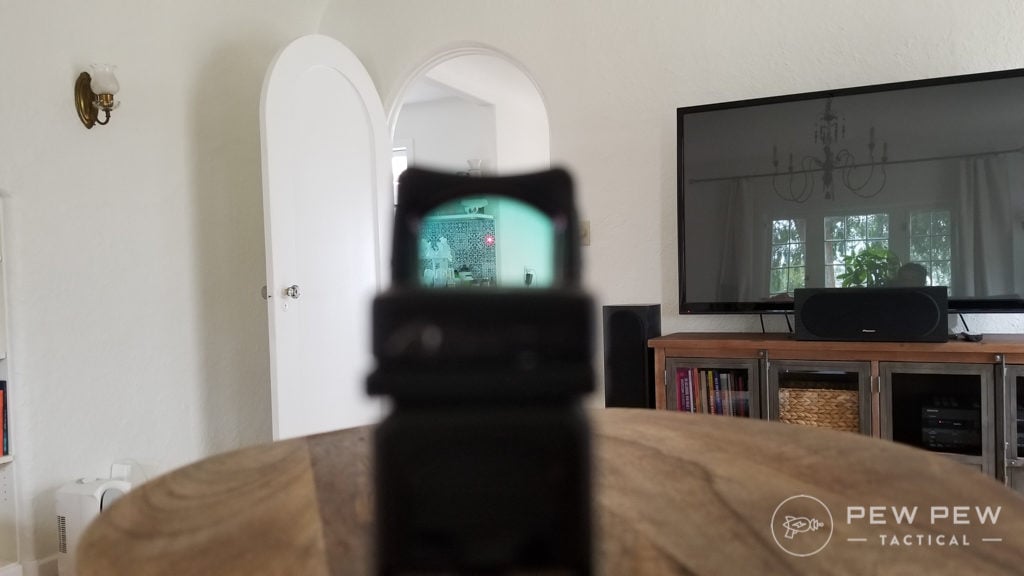
Any RMR is going to be a winner. After all, these are, without a doubt, go-to-war optics. Literally. The RMR also brings a massive aftermarket for mounts and accessories that shouldn’t be ignored.
If you want an American-made solution with a traditional dot design…the RMR delivers.
3. Burris Fastfire 3 – Best Budget Pick
Prices accurate at time of writing
Prices accurate at time of writing
-
25% off all OAKLEY products - OAKLEY25
Copied! Visit Merchant
Pros
- Affordable
- Modular
- Top loading battery
Cons
- Not proven enough for duty use
- Only three brightness settings
I’ve written about the Burris Fastfire 3…a lot. Hands down, it’s my go-to red dot when it comes to reviewing guns. If a gun doesn’t include sights, I toss a Fastfire 3 on it and go.
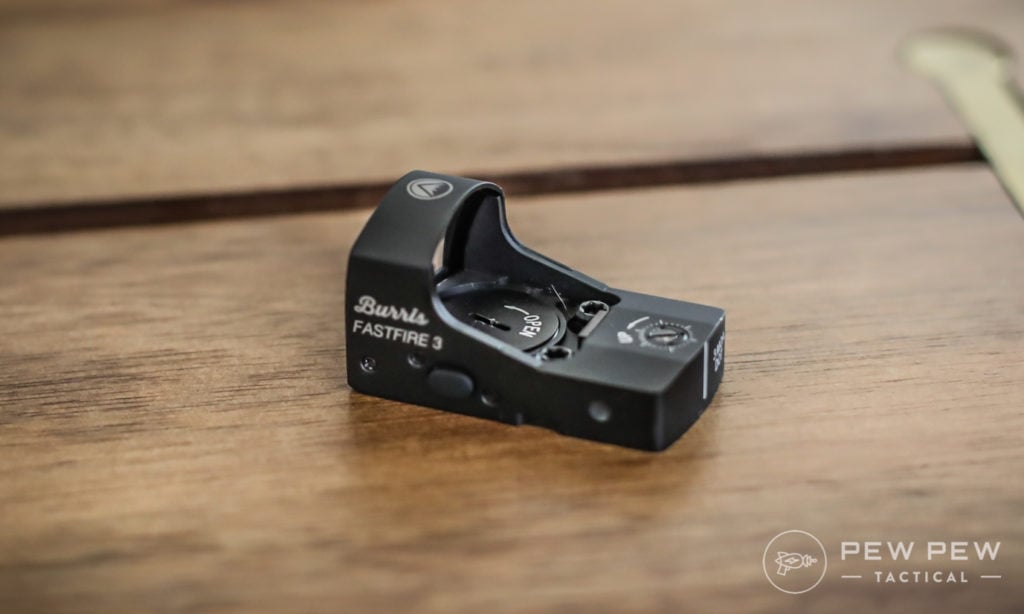
Despite a deceivingly low price, this optic features a quite robust design. It may be simple, but I like it that way.
The Fastfire uses three brightness levels and offers an auto setting with either a 3 MOA or 8 MOA dot. Its 8 MOA option is usually preferred for shotguns and handguns because it delivers more speed.
But I’ve used the 3 MOA model on shotguns without issue.
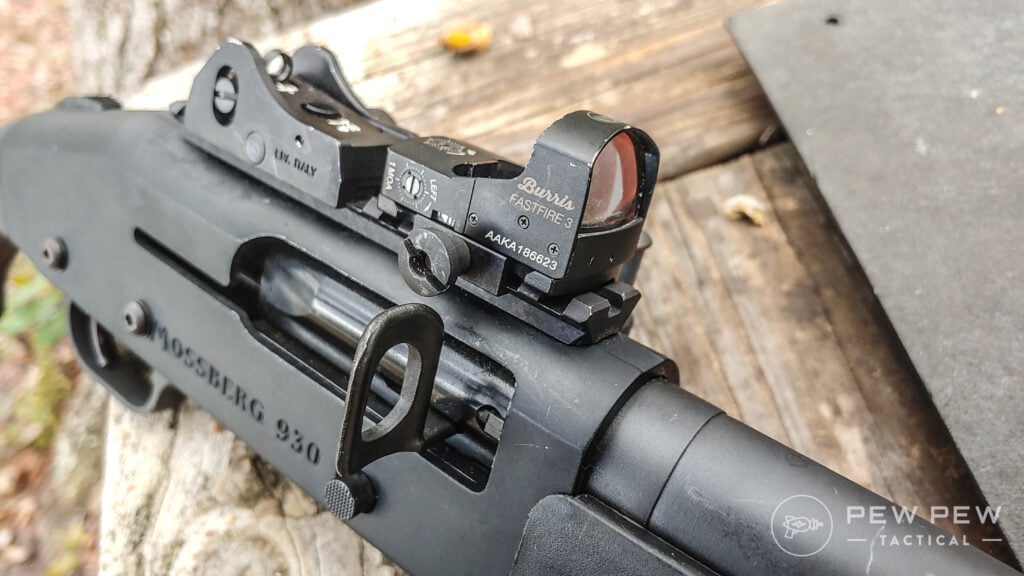
Burris produces specific mounts just for shotguns that work brilliantly. Speedbead mounts place the optic between the stock and the receiver and work with traditional shotgun stocks.
The SpeedBead is a great choice for bird hunters and trap/skeet shooters who want a modern take on the bead sight. (It also works for tactical shotguns, too!)
This design sits the optic low enough to replace the bead and provides the user with an 8 MOA dot.
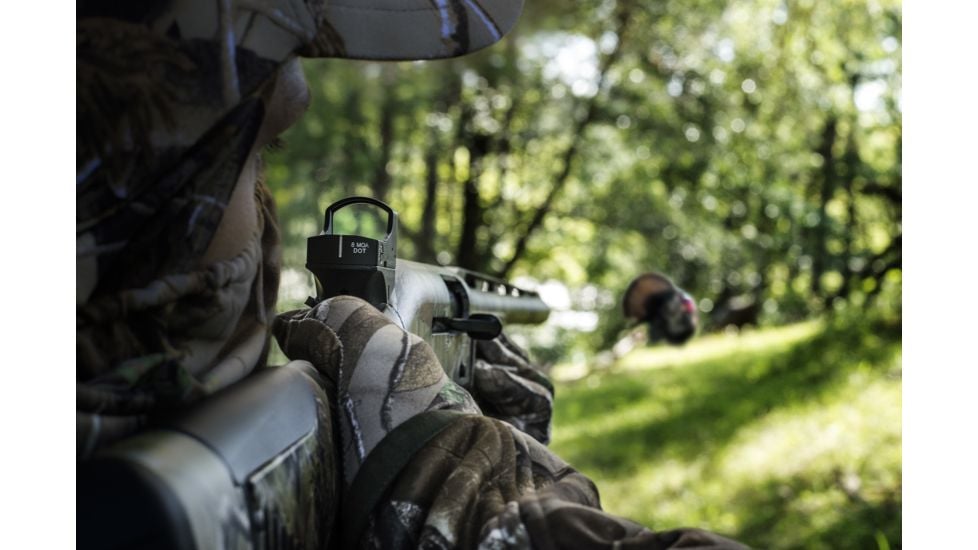
Burris makes these for a ton of different shotguns outside of the standard Remington 870/Mossberg 500 world.
Guns like the Remington 870 are popular but don’t come tapped and drilled for an optic. The Speedbead and a Fastfire 3 allows for a low mount that’s well out of the way.
Not to mention, the Fastfire is affordable.
4. Aimpoint ACRO P-2 – Best Shotgun Red Dot for Sport Shooting
Prices accurate at time of writing
Prices accurate at time of writing
-
25% off all OAKLEY products - OAKLEY25
Copied! Visit Merchant
Pros
- Compact
- Versatile
- Good battery life
Cons
- Price
Aimpoint just keeps making its optics smaller and smaller. Small optics are the bread and butter of a shotgun, and the ACRO P-2 is a natural fit for duty and tactical shotguns, as well as sporting guns. Aimpoint has thrown its weight behind the ACRO P-2 and backed it with tons of mounting options.
This includes a vent rib mount that attaches the Aimpoint P-2 to most sporting shotguns with a ventilated rib design. This means most hunting shotguns, bird guns, and sporting guns are designed for killing clays. It’s one of the few options a sports shooter has for a competent red dot.
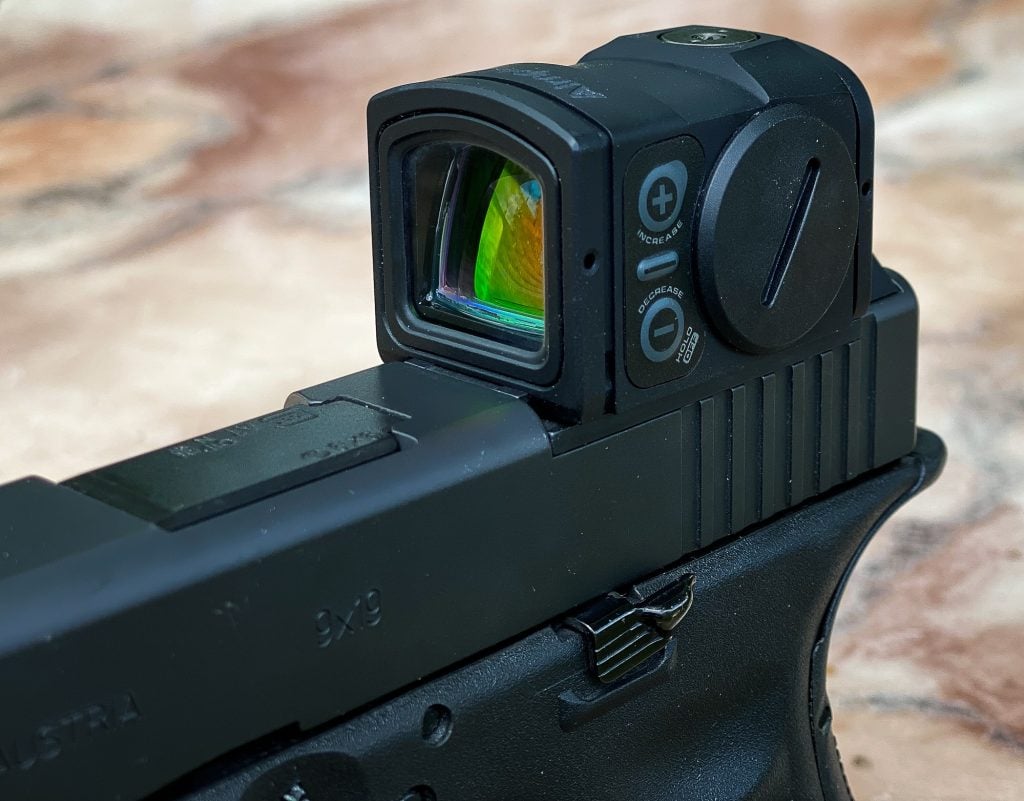
Aimpoint makes the world’s toughest red dots, proven by decades of use in actual combat. The ACRO series is their smallest and, as far as I know, didn’t participate in the Global War on Terror. However, it carries the glory Aimpoint earned by arming countless troops with their optics.
The Aimpoint ACRO P-2 uses a rugged enclosed emitter design that prevents the entry of rain, snow, dirt, debris, and more. It’s built to last and for duty use, making it perfect for shotguns, especially on-duty or home defense guns.
The Aimpoint ACRO P-2 series does have the Aimpoint price tag, which means it’s not a cheap optic.

It won’t murder your wallet, but your wallet will lose the wrestling match. The ACRO P-2 has become much more available as of late, and it’s probably the best hardcore duty option out there for shotguns.
5. Holosun EPS Carry MRS – Best Night Vision Capable Red Dot
Prices accurate at time of writing
Prices accurate at time of writing
-
25% off all OAKLEY products - OAKLEY25
Copied! Visit Merchant
Pros
- Multi-reticle system
- Excellent battery life
- Enclosed emitter
- Night vision capable
- Shake-awake
- Solar failsafe
Cons
- RMSc/K footprint can make mounting on RMR-cut guns more difficult
Mossberg made big waves by taking the 940 semi-auto series and milling the receiver to accept a Shield RMSc optic. This brilliant move made it easy to attach low-mounted optics that could co-witness with a simple bead front sight. The Holosun EPS Carry MRS provides an enclosed emitter optic that mates to the Shield RMSc footprint.
As an enclosed emitter optic, it can be used in rain and snow without problems. The EPS Carry MRS is as small as an enclosed emitter optic can seemingly get while remaining impressively capable.

The EPS CARRY MRS model features multiple reticles, which allow you to swap from a simple red dot to my favorite shotgun reticle, an open 32 MOA circle. With some prep, planning, and time, you can find a load that patterns within, or primarily within, that circle within specific ranges.
It’s also a big, easy-to-see reticle for fast snaps on target with a shotgun. Shotguns are all about speed at close range, and an excellent red dot with a big reticle gives you some fractional advantage.
The EPS Carry MRS also comes with a solar panel for backup power. The battery tray is side-mounted for easy battery swaps, and a set of big buttons sit on the side for easy brightness adjustments.
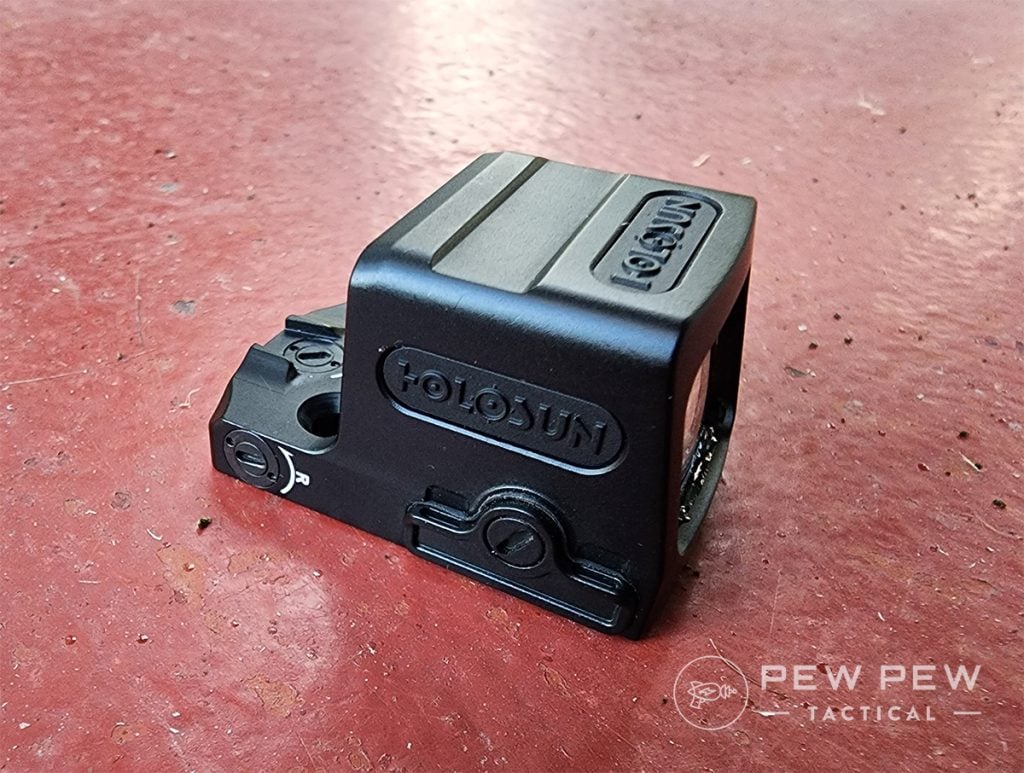
The Holosun EPS Carry MRS series works exceptionally well on the 940 series but also fits nicely on other shotguns. If you want something like the EPS with an RMR footprint, the EPS MRS is another option. It’s slightly larger and uses the RMR footprint.
Holosun used to be known as a budget brand, but as its optics improved, its prices increased. The EPS Carry MRS costs around 400 dollars. It’s a little pricey, but it’s the smallest enclosed emitter optic.
Best Scopes for Shotguns
6. Leupold VX-Freedom 3-9x40mm – Best for Slugs
Prices accurate at time of writing
Prices accurate at time of writing
-
25% off all OAKLEY products - OAKLEY25
Copied! Visit Merchant
Pros
- Great Price
- Slug based BDC
- Rugged and reliable
Cons
- Needs a dedicated optics mount and rings
Leupold’s VX Freedom line is a popular set of optics at a moderate price.
The Sabot Ballistics reticle is tuned for both muzzleloaders and slug guns, with drop compensation out to 300 yards when the optic is zeroed at 100 yards.
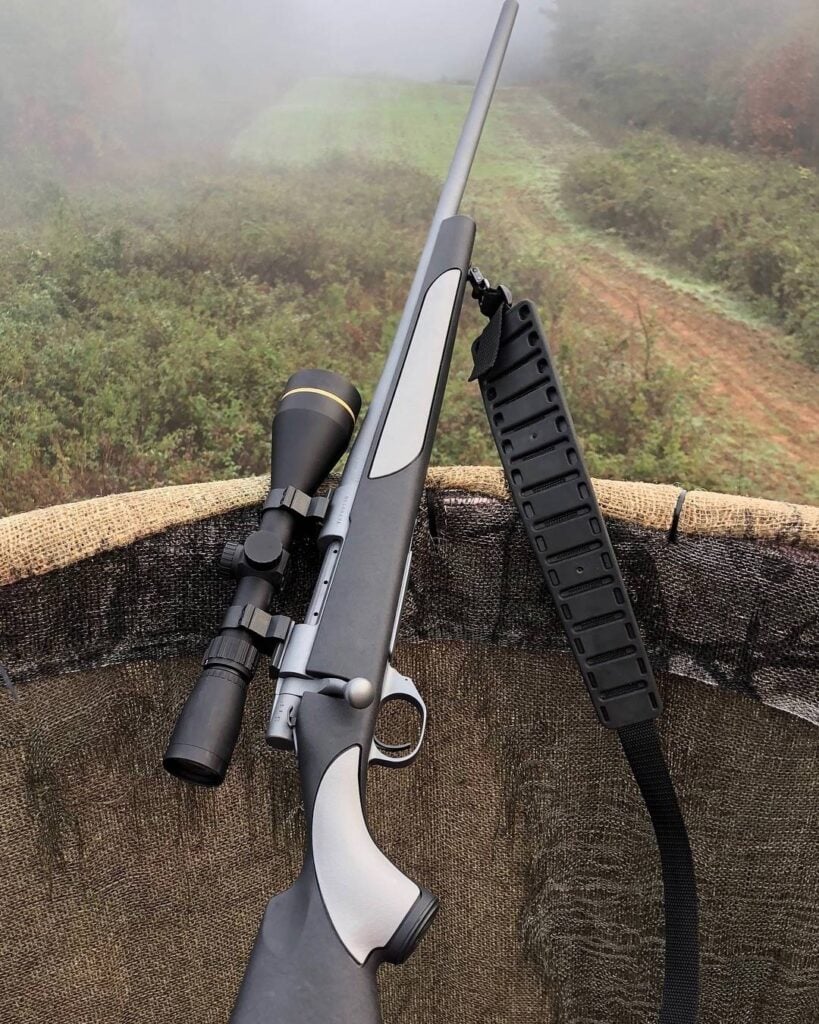
Pro tip: make sure to tune this BDC to your load, though.
Leupold uses a Twilight management system that gives you 10 additional minutes of visible light.
In my experience, most deer are moving as the sun sets and the sun rises.
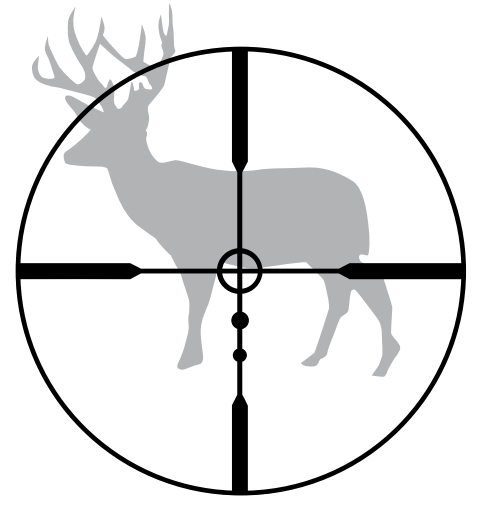
All in all, the Leupold VX Freedom with the Sabot reticle takes a slug beyond the typical slug range.
Sporting heavy praise, if I was a slug shooter, this would likely be my choice.
Best Shotgun Red Dot Mounts
Getting an optic on a shotgun provides its own degree of challenge. Shotguns aren’t quite universal, like bolt guns and ARs. Luckily, numerous companies preach the gospel of the gauge and red dot mounts.
Aridus CROM
Prices accurate at time of writing
Prices accurate at time of writing
-
25% off all OAKLEY products - OAKLEY25
Copied! Visit Merchant
Aridus makes some of the world’s best shotgun accessories, including the CROM. The CROM combines a direct red dot mount with an integrated rear sight. CROM stands for Co-Witness Ready Optic Mount.
The CROM keeps your optic low on the gun and is easy to see when mounting the stock. It accommodates the RMR and Aimpoint Micro footprints, and Aridus makes one for the Beretta 1301, the Mossberg 500 series, and the Remington 870 series.
Defender Tactical CoSight
Prices accurate at time of writing
Prices accurate at time of writing
-
25% off all OAKLEY products - OAKLEY25
Copied! Visit Merchant
I have some bias regarding the Defender Tactical CoSight because I helped design it. The folks at Defender Tactical took my napkin sketch and turned it into a reality. The CoSight mounts to Mossberg 500 series shotguns and allows you to mount an optic with an RMR footprint directly to the gun.
It also allows you to mount front and rear Glock sights that provide a backup sight system in case the optic dies. If you have a ghost ring, Mossberg, then a suppressor height sight coordinates perfectly with that front sight. If you are rocking a bead sight gun, you can slap the front sight on and have a backup sighting option.
Scalarworks Sync Series
Prices accurate at time of writing
Prices accurate at time of writing
-
25% off all OAKLEY products - OAKLEY25
Copied! Visit Merchant
A member of the Scalarworks Sync series occupies my Benelli M4 and has given me fantastic service. The Sync Series offers a low-profile mounting solution that gets my Holosun low enough to co-witness with the standard iron sights.
Scarlworks offers the Sync for Benelli, Beretta, Remington, and Mossberg shotguns. It can utilize Aimpoint ACRO, Aimpoint Micro, RMR, and DPP footprints. However, not all footprints are available for all shotgun options.
Why Do I Want an Optic on My Shotgun?
Put simply, an optic makes spotting a target faster, more precise, and a heckuva lot easier in the dark.
Old debates still rage about sights on shotguns — mostly dealing with beads and ghost ring sights. These all come down to precision and speed. Here’s the thing, though…red dots on shotguns kill that debate with prejudice.
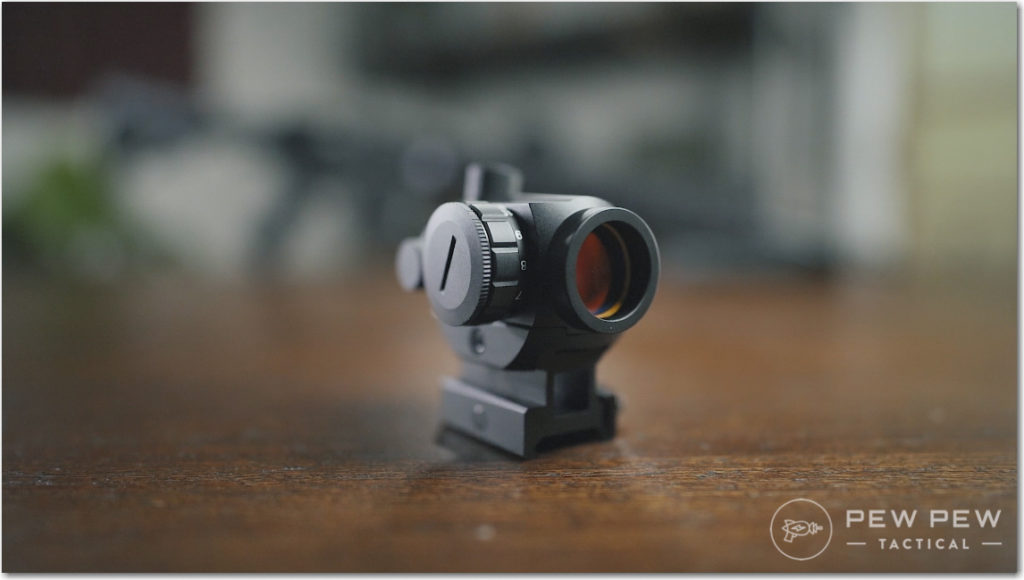
A red dot is as fast as a bead and as precise as a set of ghost ring sights.
For slug guns, the old deer sights mounted on the barrel were a common solution. While they worked, they offered a short sight radius, funky adjustments, and zero magnification. A slug gun is essentially the longest walk to get a rifle, so why not add a magnified scope?
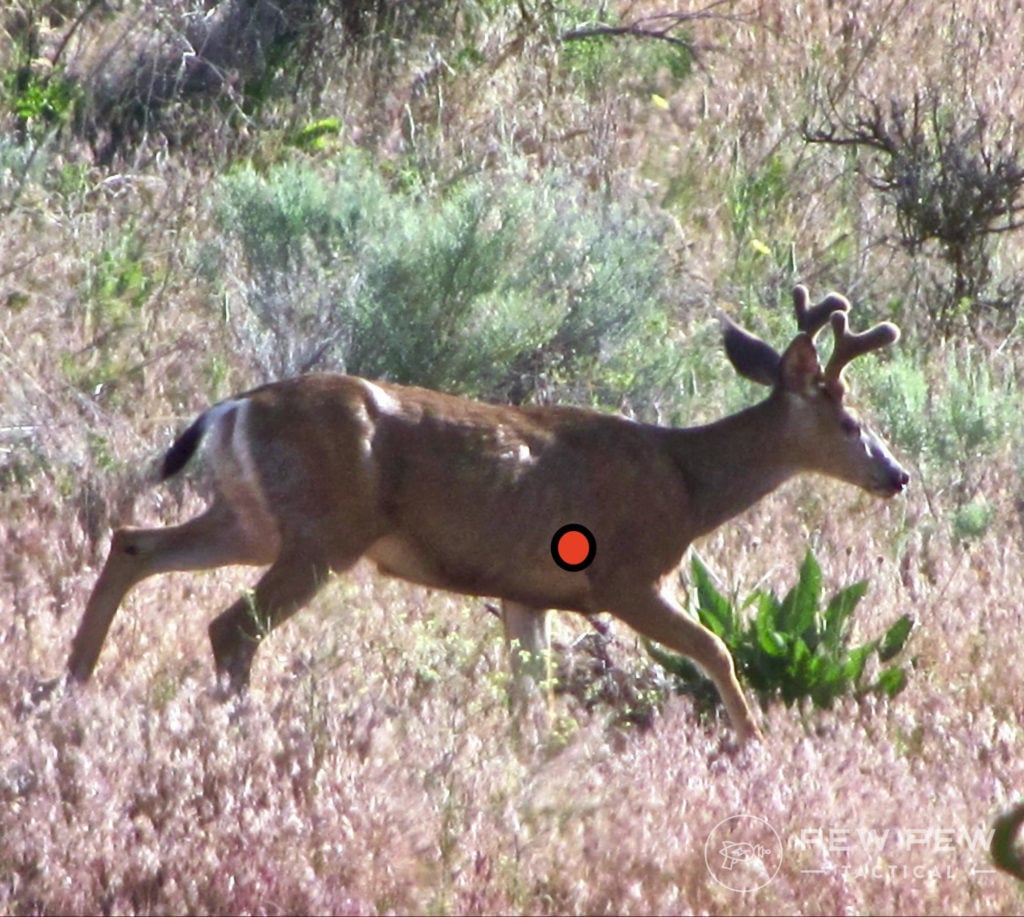
You know you wanna increase your range, precision, and ability to hit a small target on a big deer.
Tactical Shotguns vs. Hunting Shotguns: Which Optic Is Best?
With tactical shotguns, the smaller and lighter the optic, the better. Red dots rule the roost here. Tactical shotguns run buckshot and, in a pinch, slugs. A red dot gives you the capability to use both.
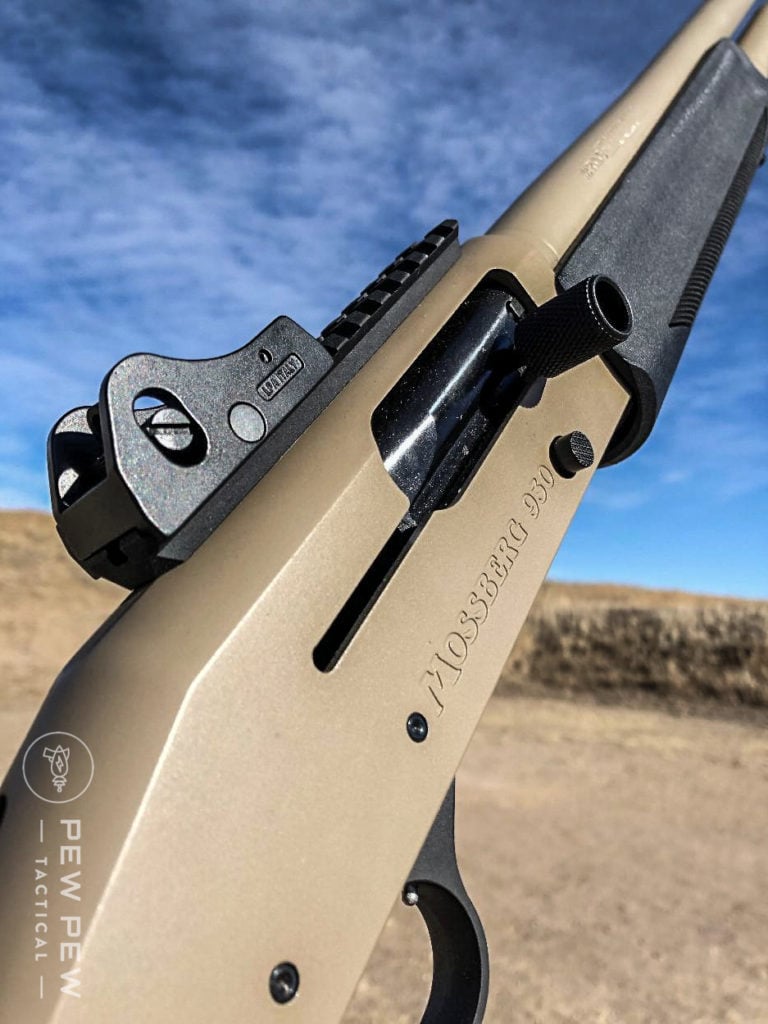
There are many types, but smaller red dots are often better, specifically MRDS designs. These are the best choices for tactical shotguns.
Through trial and error, I learned that full-sized red dots often prevent reloading. Full-sized models often prevent emergency port reloads, blocking the way when you go over the top to toss a round into the chamber.
You can admittedly always go under, but you are cutting off a means to reload. Also, with semi-auto shotguns, I’ve yet to find one in which an under-the-gun port reload is faster than an over-the-top.

Side saddles also present a problem with full-size red dots. Sometimes the optic or the mount obstructs the side saddle, inhibiting ammo removal for a reload. It’s not a universal problem, but worth mentioning.
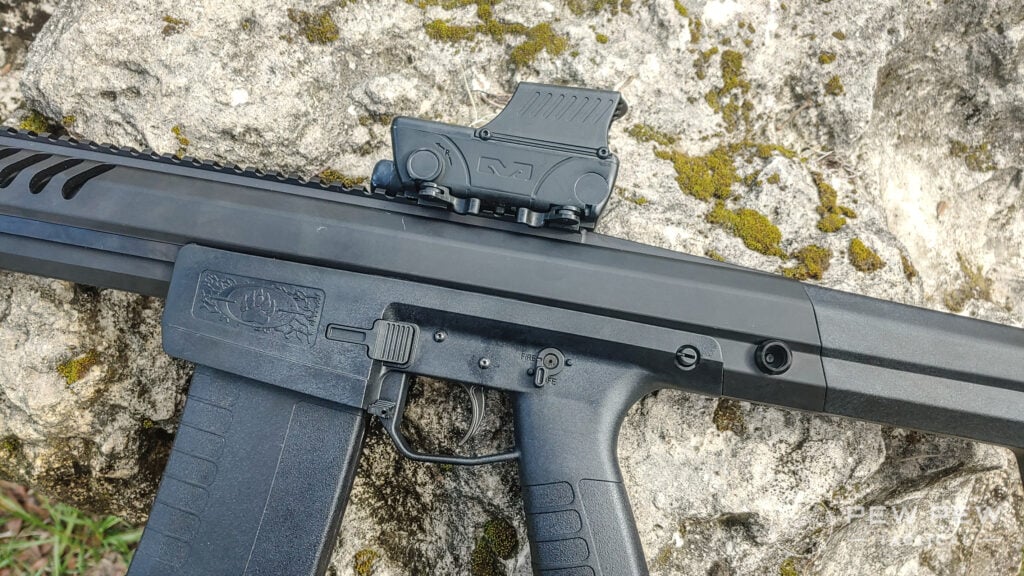
MRDS, or small red dots, present a lightweight option that can be mounted ultra-low.
I like my shotguns light, as they already tend to be heavy weapons. A lightweight optic keeps things balanced.
AR-15s and their popularity essentially mandated these high mounts on optics. As a result, tall optics give you a chin weld over a cheek weld. Spoiler alert, a chin weld on a shotgun sucks.
Most dedicated mounts call for an MRDS or a compact red dot, and it’s best to plan your optical solution around that. As expected with a tactical shotgun, you want something that is well-built, reliable, and can take a beating and keep kicking.
Hunting Shotguns
With hunting shotguns, you’ll have a lot more freedom with the optics selection. Choosing the right optic depends on what you are hunting and how you are hunting it.
With typical buckshot, I go back to red dot sights. Again, mini red dots and smaller red dots work best.
With a hunting shotgun, you don’t necessarily need a go-to-war-grade optic. You still want a quality optic, but you don’t need an RMR to hunt deer.

The same goes for birdshot. (Although it’s likely rare to see an upland bird hunter or trap shooter armed with a red dot equipped over/under.) We’ll talk about an option for those fine folks a little later, though.
Lastly, we have slug guns. These offer a unique challenge optics-wise. A red dot could be a solution, but when hunting an animal that often blends into the environment, magnification proves beneficial.
Slug guns work well with lightly magnified optics to deliver the maximum benefits of a shotgun slug. These smaller, lower-powered optics are lightweight, and the magnification can range from 1-4X, 2-7X, 3-9X.
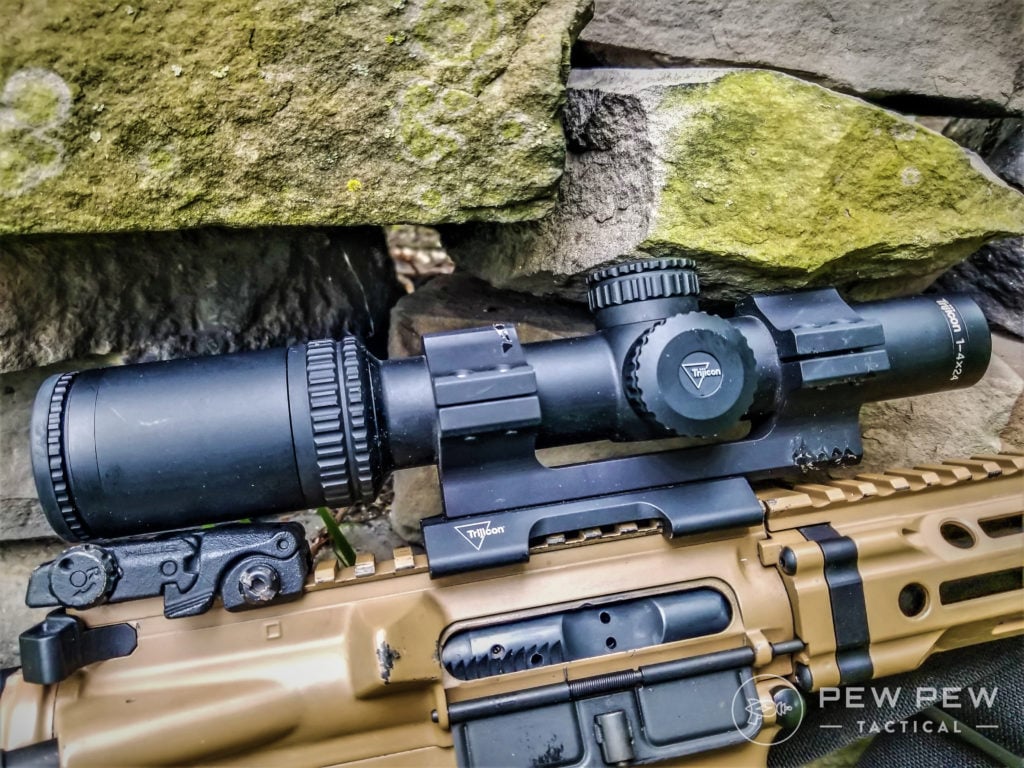
In my experience, 1-4X seems to be a good slug optic. However, with little experience in this arena, I reached out to a friend who lives in an area where rifle hunting is prohibited. My buddy swears by a 3-9X optic on a slug gun.
Final Thoughts
Optics on a shotgun may sound far-fetched, but these devices actually enhance the weapon’s capabilities, making target acquisition faster and easier. In short, a quality optic on a shotgun will land precise shots where you want them every time.
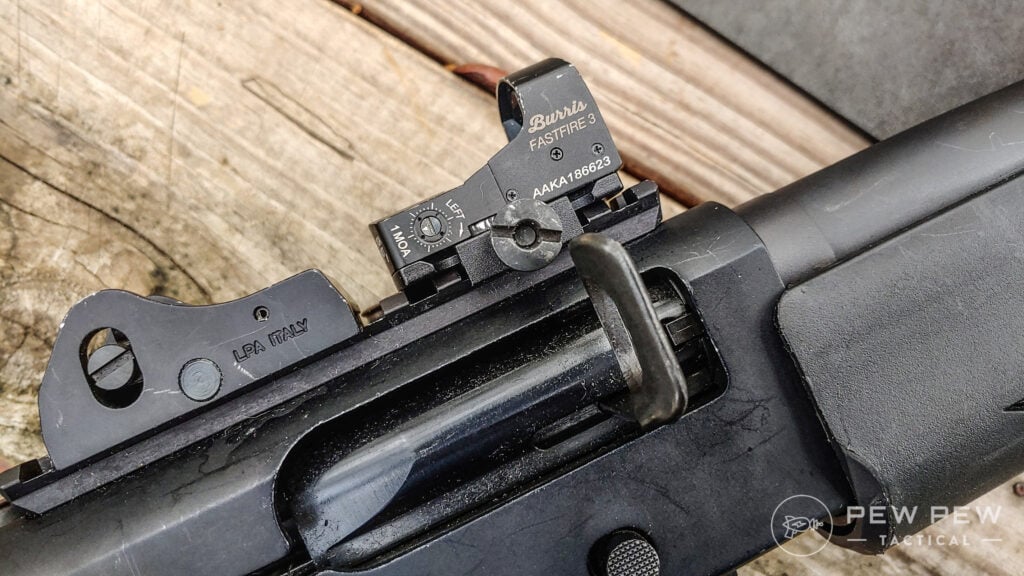
Optics and shotguns just make sense, and they are an awesome addition to your shotgun.
What optics do you use on your shotgun? What works for you? What doesn’t? Let us know below. Need a shotgun to slap your new optic on? Check out the Best Tactical Shotguns for Home Defense!
Latest Updates
- September 2024: Removed Meprolight Foresight from recommendations.

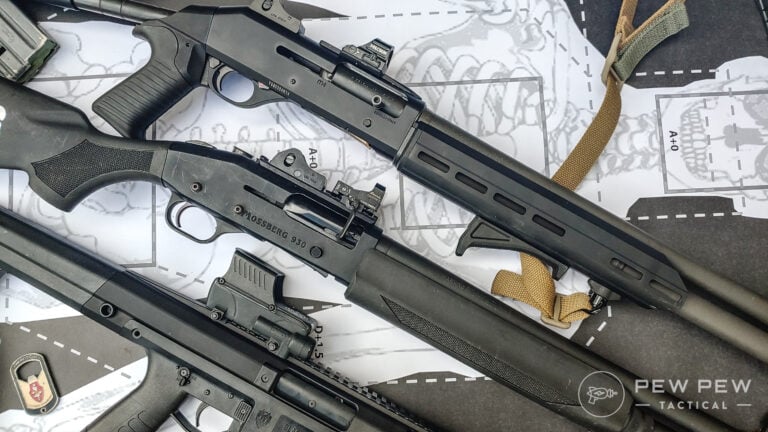
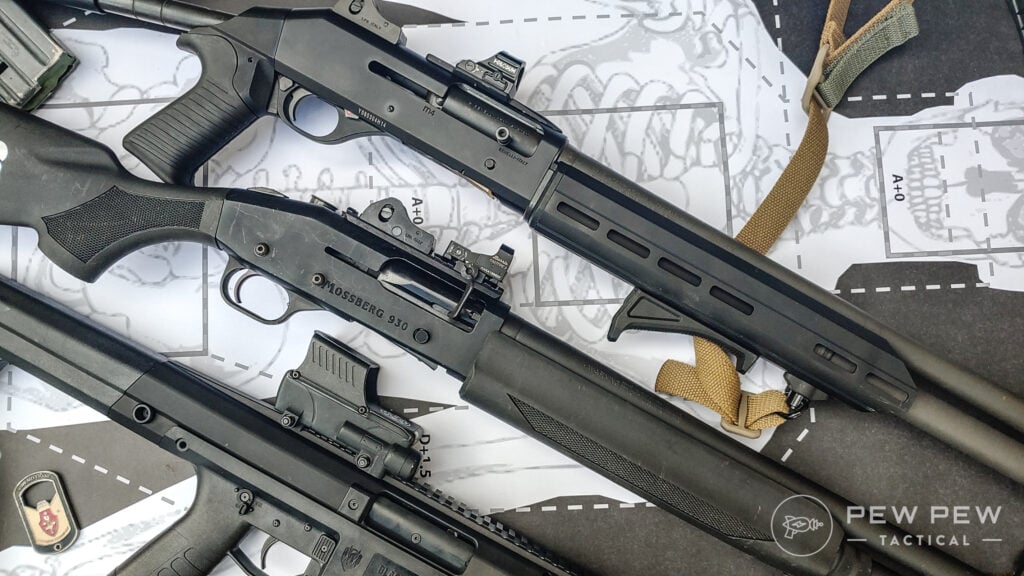
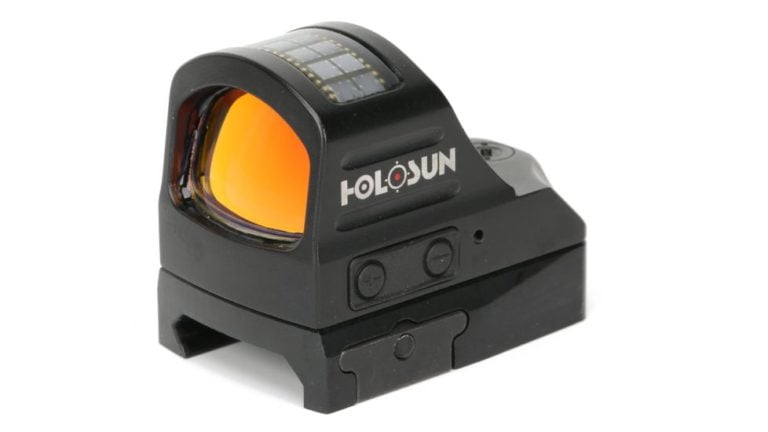
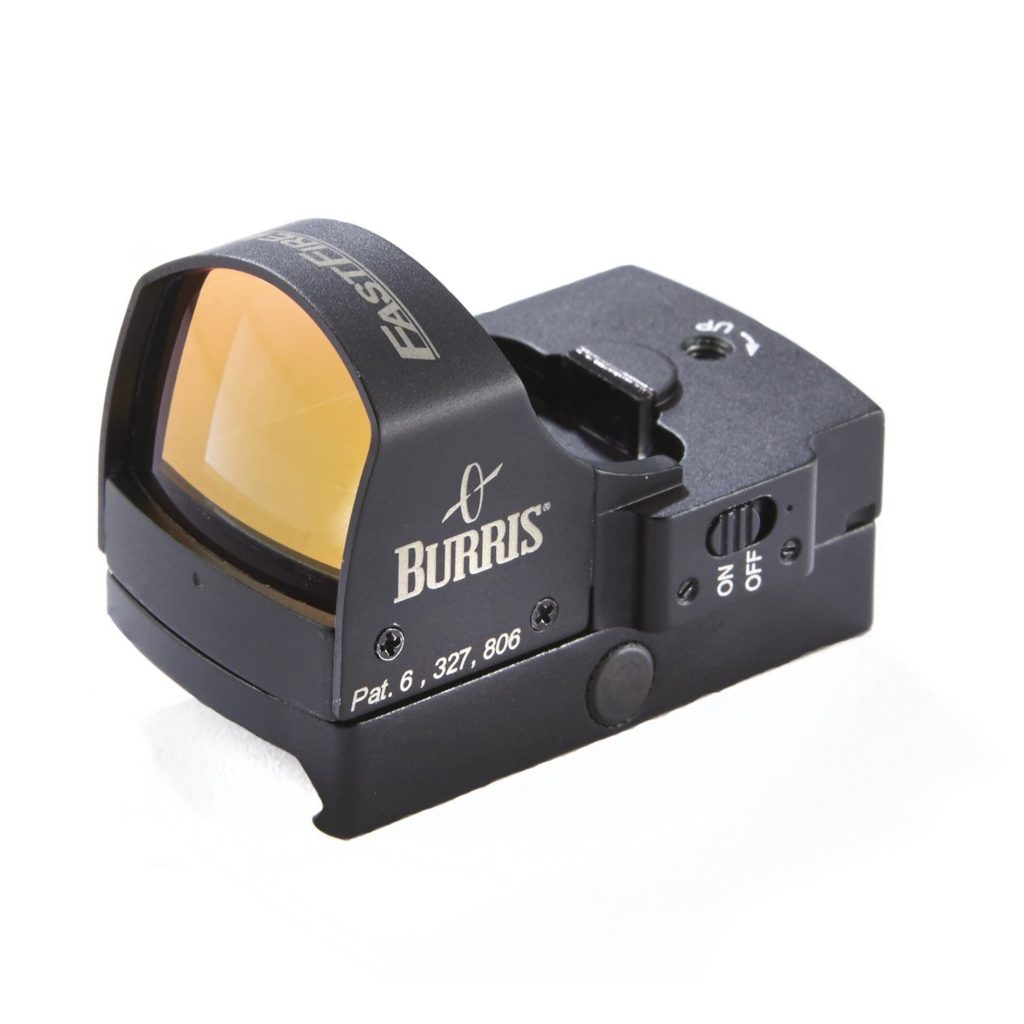
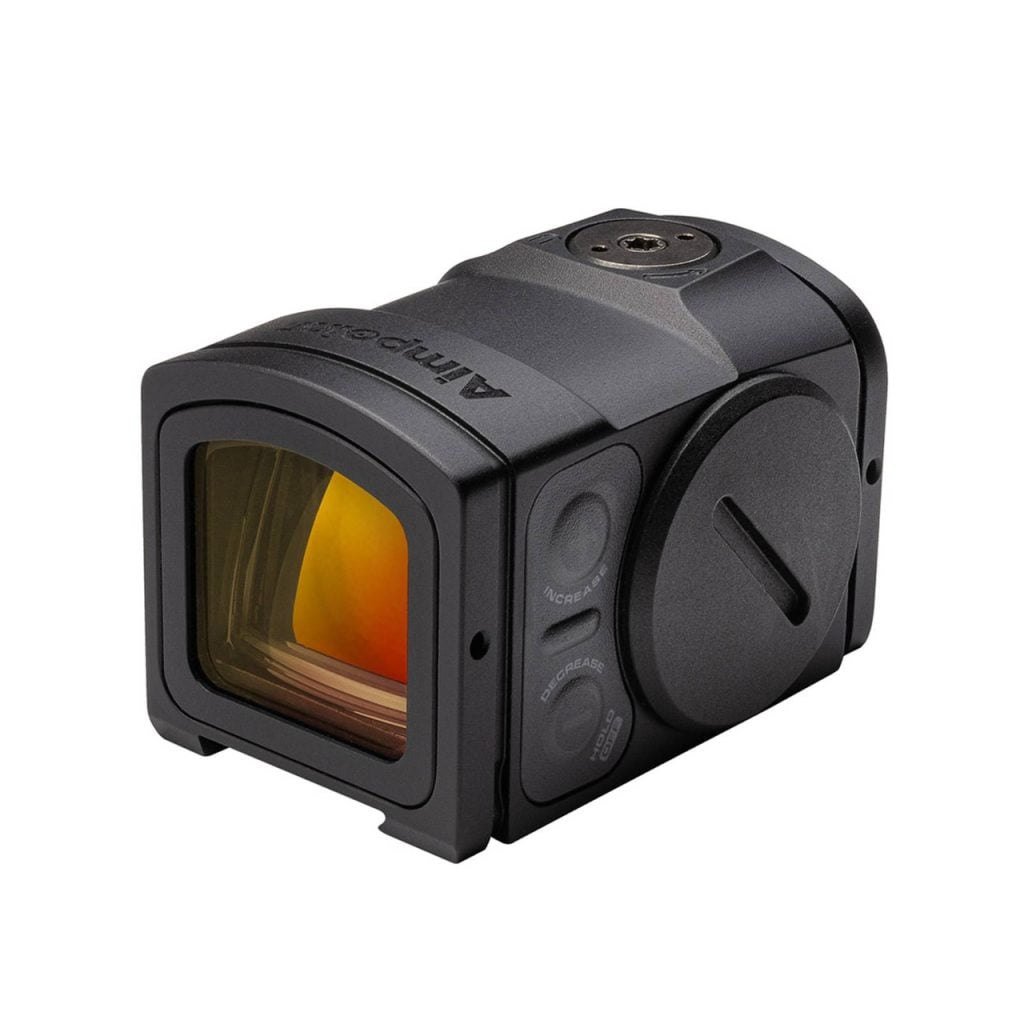
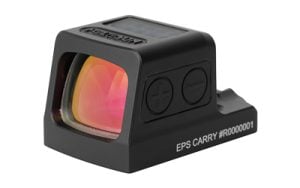
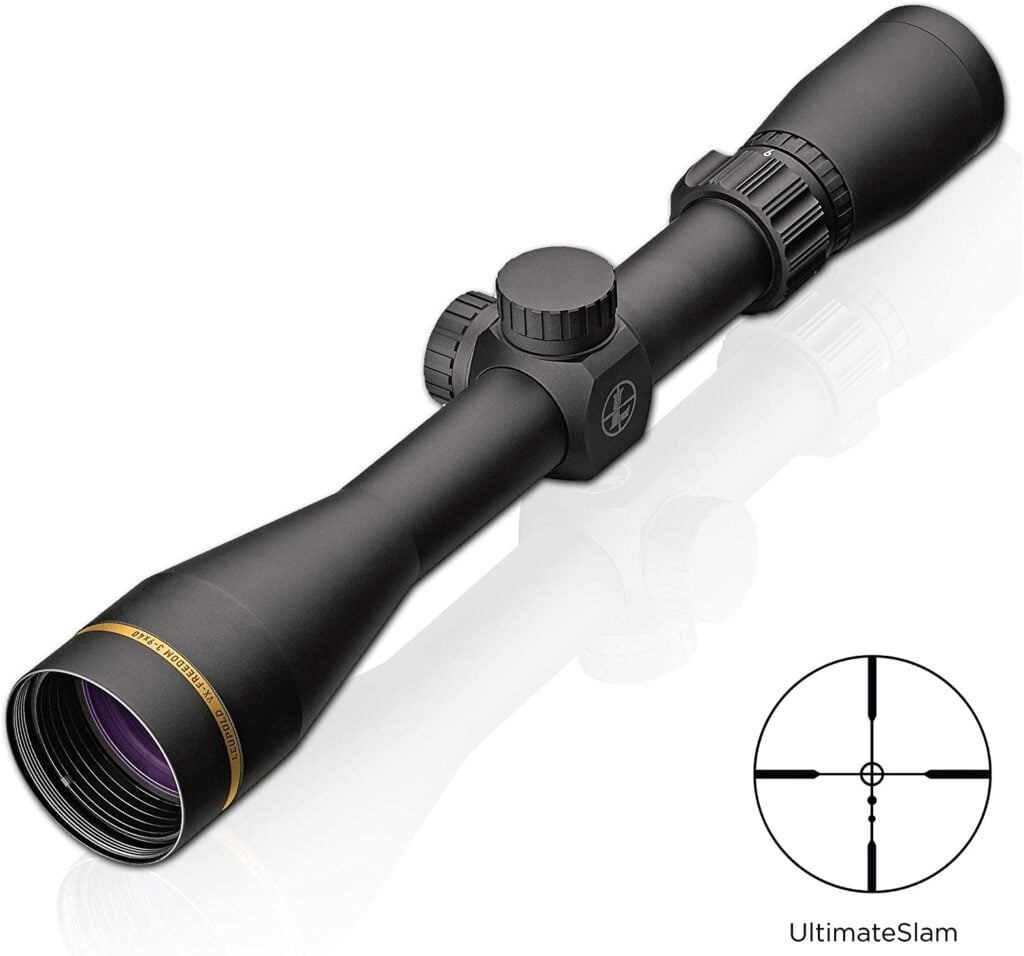
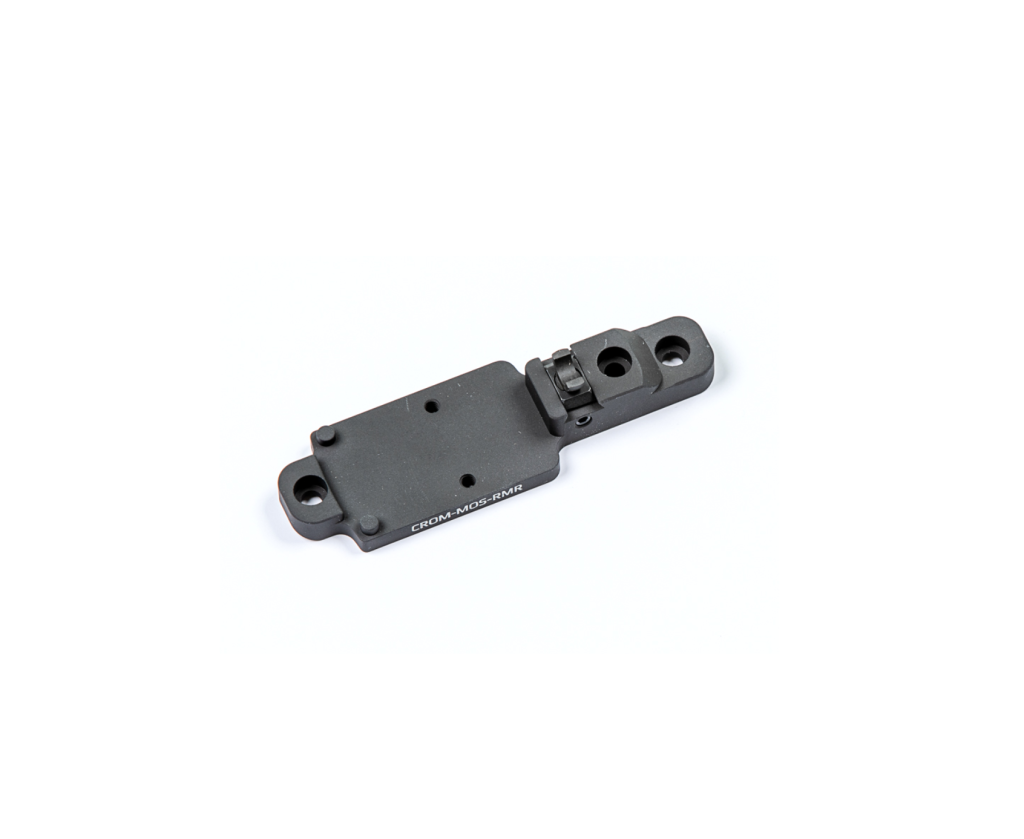
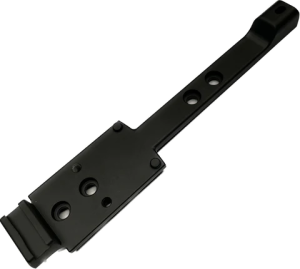
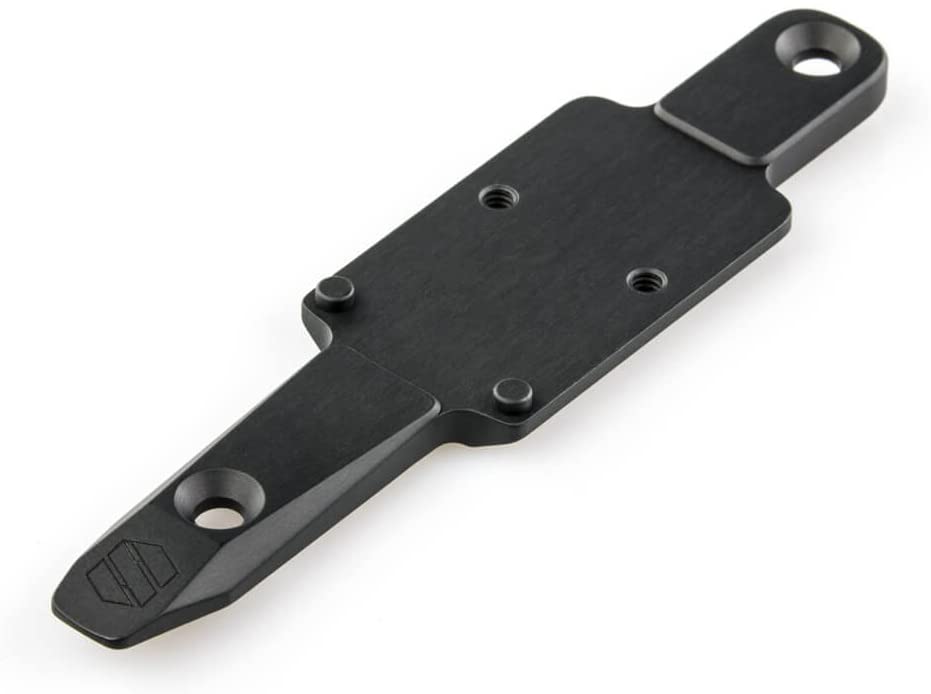
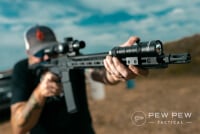

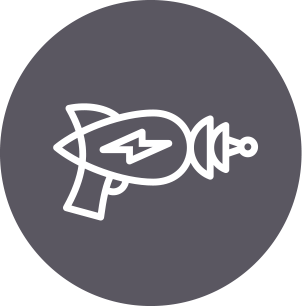




8 Leave a Reply
I have a Sightmark on my RIA VR82. I use the circle/dot reticle. Circle for buckshot. Center dot for slugs. So far, so good.
If you follow Eric’s advice, you’ll be sorely disappointed. As much as I like the Holosun red dot, it (and the others listed, won’t hold up very long. We’ve tried most all of these, and not one of them lasted more than seven months of shotgun training and practice. Not one of the companies listed honored their warranty except for Holosun, but the longest one of their sights lasted only you 4 months. (The only exception was Meprolite, which we didn’t try. Our gunsmith said he hasn’t had good luck with those.)
The only two red dot sights we’ve tried that have lasted more than 15 months are EOTech and Aimpoint, specifically, the Aimpoint Combat Optic (ACO). Both have performed well despite the recoil.
EO TECH ! ! !
What optic is best to take out small drones? Would ghost rings be better? For fast targeting of drones/ squad defense?
Please update this with the options from Airdus, Scalarworks, Vang Comp and the like. Also missing is the Holosun 503 Acss. It would be nice to see what you come up with. Especially with some offering co-witness options.
Thank you and keep up the good work!
T.p.,
Another delightfully insightful read.
Thank you.
R.P.
I feel like the Trijicon TrijiDot is a worthy mention here, for the O/U crowd. It’s not an optic, hence not getting mentioned in this article, , but it *does* have a sapphire lens and fiber optics light collection, for a huge improvement over the standard rib beads in that type of gun. I couldn’t believe what a well executed piece of equipment it was, and immediately improved my acquisition speed for clays.
I'm with you, Kevin. The trijidot is very reliable fiber optic sight that doesn't cost more than any of my shotguns, doesn't get in the way of tactical reloading, and I don't have to worry about a battery dying. I have some type of fiber optic on my Slug gun, duck guns, and self defense shotguns. I know all of them work when I need them and they're all accurate.